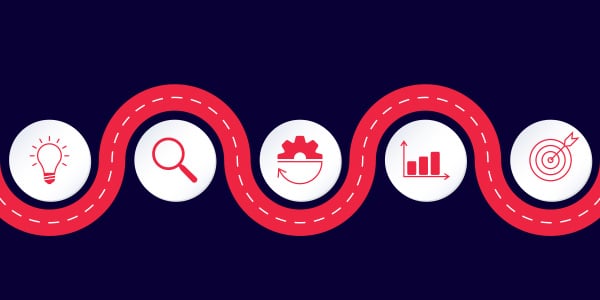What Marketers Need to Know About Supply Path Optimization

A few years ago, Supply Path Optimization (SPO) became a buzzy topic in the ad tech world.
Like Viewability and Brand Safety in previous years, marketers quickly bought into the concept of SPO and its importance — after all, who wouldn’t want to cut out unnecessary middlemen and buy cost-efficient inventory? As a result, many brands quickly updated their strategies or signed up for various SPO solutions over the past year.
Just as they tackled those previous issues and crises by adopting new tech or standardizing processes, most brands felt as though they’d checked the proverbial SPO box.
The thing is, the concept of SPO — and its various definitions and tactics — doesn’t neatly fit in a box. It’s not as simple as signing on a brand safety vendor or implementing viewability software and having the problem solved. In our experience, it needs a proactive, continuous approach that requires a blend of specialized technology and a thorough understanding of the supply chain.
From what we’ve seen in the market of late, far too many brands have underutilized the SPO tools at their disposal or think they’ve done more toward cleaning up their supply chains than they actually have.
To help, we’ve put together a handy list of questions to ask when trying to assess your brand’s SPO success.
First of all, what exactly is Supply Path Optimization?
At the heart of it, SPO is about a desire for marketers to purchase ad inventory in the most direct fashion possible. As the ad tech ecosystem has grown more complex, it’s become increasingly difficult for brands to have a true handle on who they are actually buying inventory from, because there are often numerous intermediaries between a supply side partner (whether that’s a publisher, an SSP or an exchange) and a DSP.
It’s not that intermediaries are inherently bad per se. Many ad tech providers deliver excellent value. However, as the programmatic landscape has multiplied exponentially, there are frequently ad deals that involve redundant or even exploitive partnerships.
This issue has become more apparent since the adoption of header bidding became widespread on the supply side. That has resulted in DSPs seeing a significant uptick in auction duplication (i.e., the same users available for targeting through a multitude of platforms).
At the same time, brands have increasingly looked to extend their buys across a wide range of exchanges in order to achieve more scale and lower prices. However, this can also lead to multiple exchanges pushing the same inventory. It’s not unheard of for a buyer to see 25 or more bid requests for a single ad impression and for buyers to see 100+ publishers with the same names.
What are the issues SPO look to address specifically?
Reduce costs. The most obvious benefit to a brand undergoing some sort of SPO audit is to make sure they aren’t paying any intermediaries unnecessarily, either in the form of usage fees or other hidden charges.
Protect data. In an era where marketers are leaning heavily into growing their first-party data pools, this resource needs to be guarded at all costs. Therefore, the fewer players touching this data, the better.
Speed and lost opportunities. Even as programmatic ad transactions can occur in milliseconds, the more “hops” an ad buy involves, the more things can get bogged down. That’s because the same data and bid request information must travel across a long list of intermediaries, significantly slowing down the process. Ideally, ad auctions should be completed within 200 to 225 milliseconds. Anything longer than that can lead to creative not being served, missed bids and lost potential conversions. Ultimately, this is costing brands business, which is difficult to quantify.
Guard against fraud. Most brands and publishers employ various fraud protections as a standard part of their digital ad efforts. However, brands are still vulnerable to scammers selling non-human traffic or spoofed web domains due to a lack of visibility on their supply chain.
Smart analysis and optimization. One of the great benefits of digital advertising is that it allows marketers to adjust on the fly and do more of what’s working and less of what isn’t. Yet when a company’s inventory supply is opaque or its buying process less than efficient, these factors can taint the data involved in optimization, leading to slower or less informed decision-making.
But why haven’t there been industry initiatives aimed at fixing SPO?
The good news is that the IAB (Interactive Advertising Bureau) has established two standards that are designed for more granular SPO: namely Sellers.json and Supply Chain Object (schain). Both can help marketers determine which intermediaries are legitimate and valuable. But neither improve SPO for individual brands — that is in each marketer’s hands.
So what should brands do?
As SPO rose in prominence a few years ago, many marketers took early action and thought they checked the SPO box by partnering with companies that promised some degree of scrutiny. However, SPO is not something that CMOs can afford to be passive about.
There is a growing number of specialized SPO products in the market, but getting the most out of them will need a proactive, diligent approach. This may require actively blocking specific vendors, continuously questioning costs and gaining a deeper understanding of all the intermediaries in the supply chain.
Overall, as brands look to optimize their media spend and achieve their desired KPIs, they need as much insight as possible to get their supply paths in order. That’s where the right partners can make a difference.
STAY IN THE LOOP WITH OUR NEWSLETTER
Sign up to get Viant news and announcements delivered straight to your inbox.
Sign up to get Viant news and announcements delivered straight to your inbox.
